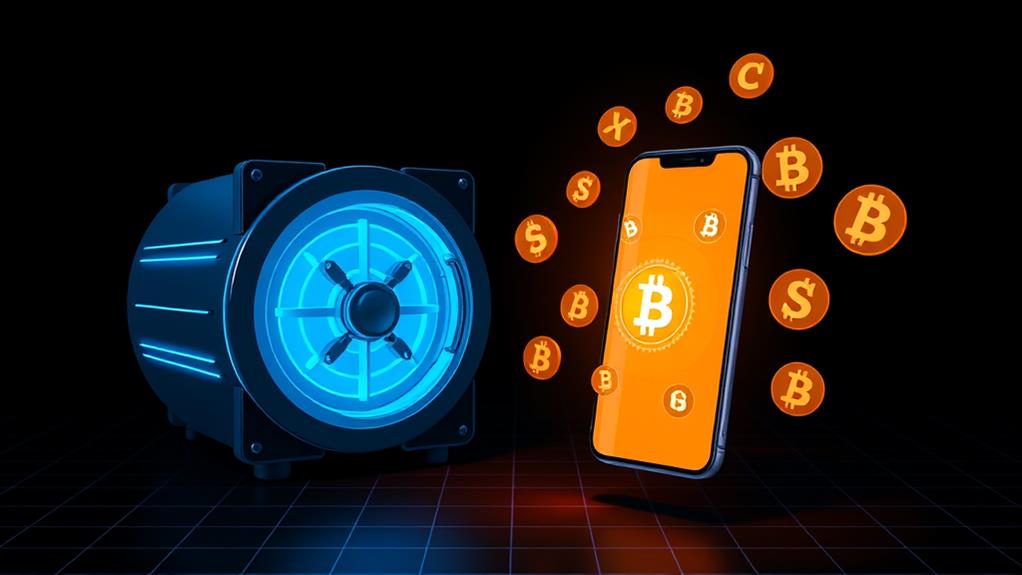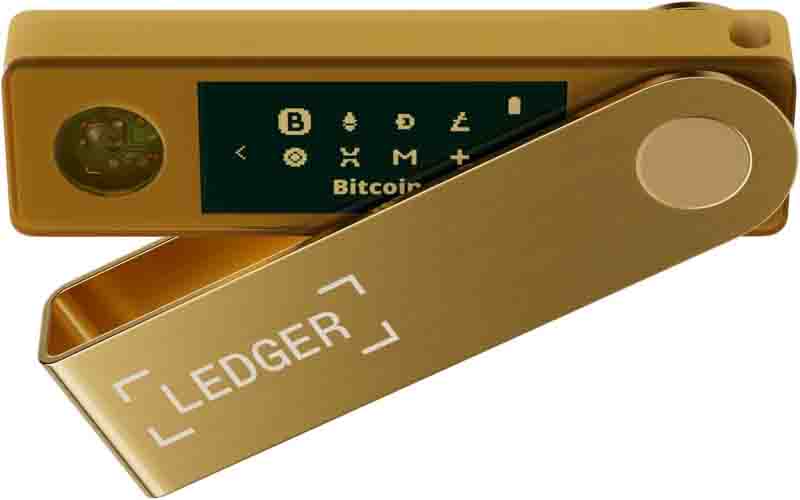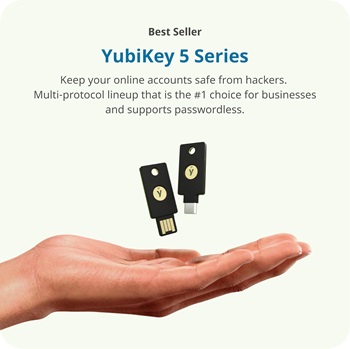Mastering Digital Ledgers: Your First Steps Into Crypto
Note: This post may contain affiliate links, and we may earn a commission (with No additional cost for you) if you make a purchase via our link. See our disclosure for more info. The crypto world is constantly changing. This content is for informational purposes only and not financial, legal, or professional advice So, please verify the info on the cryptocurrency provider’s websites.
Did you know that the concept of blockchain technology predates Bitcoin by nearly two decades? While cryptocurrencies have brought digital ledgers into the spotlight, the foundations of this revolutionary system were laid as early as 1991. As you commence on your journey into the domain of crypto, you'll discover that mastering digital ledgers involves much more than understanding virtual currencies. It's about grasping the potential of a decentralized future, where transparency and security reign supreme. Whether you're a curious beginner or a tech enthusiast, the universe of blockchain offers a fascinating landscape of innovation that's reshaping our digital interactions.
Key Takeaways
- Understand blockchain technology as a decentralized digital ledger with applications beyond cryptocurrencies.
- Learn about different types of cryptocurrency wallets, including hot, cold, mobile, hardware, and paper wallets.
- Implement security best practices like private key protection, cold storage use, and two-factor authentication.
- Grasp the mechanics of blockchain transactions, including initiation, authorization, and consensus mechanisms.
- Familiarize yourself with reputable exchanges and market analysis tools for informed trading decisions.
Blockchain: The Digital Ledger Revolution
In the domain of digital technology, blockchain has emerged as a revolutionary force, transforming the way we record and verify transactions. This decentralized digital ledger technology operates across multiple computers, ensuring transparency and immutability of data. Each block in the chain contains a list of transactions, a timestamp, and a cryptographic hash of the previous block, creating a secure and unbreakable chain of information.
Key features of blockchain technology:
- Distributed nature
- Resistance to hacking and fraud
- Transparency and immutability
The distributed nature of blockchain makes it highly resistant to manipulation, as altering any single block would require changing all subsequent blocks across the entire network. This security feature has made blockchain the foundation for cryptocurrency transactions, enabling peer-to-peer transfers without intermediaries like banks or payment processors.
Beyond cryptocurrencies, blockchain's applications extend to various industries:
- Supply chain management
- Secure voting systems
- Identity verification
As you explore the world of digital ledgers, you'll discover that blockchain technology offers a secure, transparent, and efficient way to record and verify transactions across multiple domains. Its potential to revolutionize industries and streamline processes makes it an essential technology to understand in today's digital landscape.

Cryptocurrency Wallets Explained
When it comes to cryptocurrency wallets, you'll encounter two main types: hot wallets and cold wallets.
Hot wallets, which are connected to the internet, offer convenience for frequent transactions but are more vulnerable to cyber threats.
Cold wallets, stored offline, provide enhanced security for long-term holdings but may be less convenient for regular use.
Types of Crypto Wallets
Cryptocurrency's growing popularity has sparked increased interest in the various types of wallets available for storing digital assets. When it comes to safeguarding your crypto, you'll encounter two main categories: hot wallets and cold wallets.
Hot wallets, connected to the internet, offer quick access to your funds but are more vulnerable to online threats. Cold wallets, on the other hand, store your assets offline, providing enhanced security against hacking attempts.
To help you visualize the wallet options, consider these three types:
- Mobile wallets: Apps on your smartphone for convenient transactions
- Hardware wallets: Physical devices resembling USB drives for offline storage
- Paper wallets: Printed QR codes containing your public and private keys
Each wallet type generates and stores both public and private keys. Your public key acts as an account number for receiving funds, while your private key authorizes transactions.
It's essential to keep your private key and seed phrase secure, as they're vital for recovering access to your wallet if lost or damaged.
Security Best Practices
Safeguarding your cryptocurrency wallet is paramount to protecting your digital assets. Implementing security best practices guarantees the safety of your private and public keys, which are essential for accessing your funds on the blockchain.
To maximize protection:
- Never share your private key: This is the most critical security measure, as revealing it can lead to irreversible loss of funds.
- Use cold storage for long-term holdings: Hardware wallets offer enhanced security for assets not needed for daily transactions.
- Diversify wallet types: Spread your holdings across multiple wallets, including both hot and cold storage solutions, to mitigate risks.
- Secure recovery phrases: Store these confidential phrases in a safe, offline location, as they're vital for restoring wallet access.
- Keep software updated: Regularly update your wallet software to benefit from the latest security enhancements.
- Enable two-factor authentication: This adds an extra layer of security to your wallet access.

Public and Private Keys Demystified
Two essential components form the backbone of cryptocurrency security: public and private keys. These well-explained concepts are vital for anyone venturing into the world of digital assets. Your public key serves as your wallet's address, allowing others to send you cryptocurrency, much like a bank account number.
On the other hand, your private key acts as a password, granting you exclusive access to manage and spend your funds.
To better understand the importance of these keys, consider the following:
- Imagine your public key as a transparent, unbreakable safe where anyone can deposit money.
- Picture your private key as the sole combination to open that safe and access its contents.
- Envision seed phrases as a secret map leading to a hidden vault containing your private key.
Each wallet generates a unique pair of keys using complex algorithms, ensuring secure transactions within the blockchain network.
It's essential to keep your private key confidential, as anyone with access to it can control your funds. Many wallets offer seed phrases as a backup method, typically consisting of 12 to 24 words, to recover access if your private key is lost or compromised.
Understanding Blockchain Transactions
After grasping the concept of public and private keys, it's vital to understand how blockchain transactions work. When you initiate a transaction, you're transferring a digital asset from one wallet address to another. These addresses are derived from public keys, ensuring a secure and transparent process.
To authorize a transaction, you'll use your private key. This step is fundamental, as it proves you're the rightful owner of the funds. Once initiated, the transaction is recorded in a block and added to the blockchain. This immutable ledger allows all network participants to view the transaction history, enhancing transparency and security.
Transaction confirmation occurs through the blockchain's consensus mechanism. Network participants validate and agree on the transaction's legitimacy before it's finalized.
It's significant to acknowledge that transaction fees and processing times can vary greatly depending on network congestion and the cryptocurrency you're using. For example, Bitcoin transactions often take longer and incur higher fees compared to those on Ethereum or Ripple networks.
Understanding these aspects of blockchain transactions will help you navigate the crypto space more confidently and make informed decisions about your digital assets.

Cold Storage vs. Hot Wallets
In light of the growing importance of cryptocurrency security, understanding the difference between cold storage and hot wallets is essential.
Cold storage refers to offline wallets that aren't connected to the internet, providing enhanced protection against hacking and cyber theft. Hot wallets, on the other hand, are online wallets connected to the internet, offering convenience for frequent transactions but with increased vulnerability to security breaches.
When deciding between cold storage and hot wallets, consider the following:
- Long-term holding: Picture your crypto assets safely tucked away in a hardware wallet, protected from online threats.
- Active trading: Visualize quick and easy access to your funds through a mobile app or exchange platform.
- Balanced approach: Imagine a combination of both methods, with most assets in cold storage and a smaller amount in hot wallets for daily use.
Studies show that approximately 90% of cryptocurrencies held in exchanges (hot wallets) are at risk of hacking. This statistic underscores the significance of using cold storage for safeguarding significant amounts.
To balance convenience and safety, consider diversifying your crypto assets by utilizing both cold storage for security and hot wallets for accessibility.
Securing Your Crypto Assets
Building on the understanding of cold storage and hot wallets, it's time to explore the broader aspects of securing your crypto assets. Protecting your private keys is the cornerstone of crypto security, as losing them means permanently losing access to your funds.
To mitigate risks, consider these essential strategies:
- Diversify your holdings: Spread your crypto across multiple wallets to reduce the impact of a potential security breach.
- Use cold storage: Keep the majority of your assets in hardware wallets for enhanced security.
- Implement 2FA: Enable two-factor authentication on all your wallets and exchange accounts.
- Regular backups: Backup your wallet and store recovery phrases securely in multiple locations.
Hot wallets, while convenient for transactions, should only hold small amounts due to their vulnerability to hacking. Reserve them for day-to-day use, while keeping larger holdings in cold storage.
Remember, securing your crypto assets is an ongoing process that requires vigilance and adaptability. By implementing these security measures, you'll considerably reduce the risk of unauthorized access and potential loss of your valuable digital assets.
Stay informed about the latest security practices and regularly review your protection strategies to guarantee the safety of your crypto investments.
Navigating Exchanges and Marketplaces
When maneuvering the world of cryptocurrency exchanges and marketplaces, you'll need to choose reputable platforms that align with your trading goals and security preferences.
You can start by researching well-established exchanges like Binance, Coinbase, or Kraken, which offer a range of features and have proven track records.
To make informed decisions, you'll want to familiarize yourself with market analysis tools provided by these platforms, such as price charts, order books, and trading volume indicators, which can help you identify trends and make strategic trades.

Choosing Reputable Exchanges
How can you assure you're choosing a reputable cryptocurrency exchange? When venturing into the world of digital assets, selecting a trustworthy platform is vital for your financial security and peace of mind.
Start by examining the exchange's security measures, such as two-factor authentication (2FA) and cold storage options for user funds. These features help protect your assets from potential hacks or theft. Additionally, read user reviews to gain insights into other traders' experiences and the exchange's overall reputation.
Consider the following factors when evaluating an exchange:
- A fortress-like digital vault, equipped with state-of-the-art encryption and multi-layered security protocols.
- A bustling trading floor, filled with active buyers and sellers, guaranteeing high liquidity and competitive prices.
- A responsive customer support team, ready to assist you 24/7 with any questions or concerns.
Look for exchanges that comply with regulatory requirements in your jurisdiction. This indicates their commitment to operating within legal frameworks.
Check the platform's trading fees, withdrawal limits, and supported cryptocurrencies to confirm they align with your investment strategy. By carefully considering these factors, you'll be better equipped to choose a reputable exchange that meets your needs and provides a secure trading environment.
Market Analysis Tools
Savvy cryptocurrency traders frequently rely on market analysis tools to navigate the complex landscape of digital asset exchanges and marketplaces.
These tools, such as CoinMarketCap and CoinGecko, provide real-time data on cryptocurrency prices, market capitalization, and trading volume across various exchanges. By leveraging these resources, you can gain valuable insights into market trends and make informed trading decisions.
Key Indicators for Market Analysis:
- Relative Strength Index (RSI)
- Moving Average Convergence Divergence (MACD)
- Bollinger Bands
These indicators help you assess market trends and potential price movements, much like in the traditional financial industry.
Order books are another essential tool, displaying buy and sell orders to help you understand market depth and liquidity.
Many trading platforms offer advanced charting tools, allowing you to perform technical analysis using candlestick patterns and price indicators. These features can help you identify ideal entry and exit points for trades.
To maximize your success in the cryptocurrency market, it's vital to stay informed about industry news and events.
Regulatory changes, technological advancements, and major partnerships can greatly impact cryptocurrency prices and trading volumes, making ongoing education and awareness essential components of your trading strategy.

Smart Contracts and DApps
At the heart of blockchain innovation lie smart contracts and decentralized applications (DApps), revolutionizing how we conduct transactions and interact with digital systems.
Smart contracts, well-researched and programmed in Solidity, automate agreements on platforms like Ethereum, guaranteeing trustless execution without intermediaries. These self-executing contracts form the backbone of DApps, which provide user interfaces for interacting with blockchain networks.
The power of smart contracts and DApps extends far beyond cryptocurrencies, finding applications in:
- Supply chain management, tracking products from manufacturer to consumer
- Healthcare systems, securely managing patient records and consent
- Digital identity verification, enabling trustless proof of identity online
As you explore the world of digital ledgers, understanding smart contracts and DApps is essential.
They're transforming industries by enhancing transparency, reducing costs, and eliminating the need for intermediaries. With their ability to automate complex processes and guarantee tamper-proof execution, smart contracts are paving the way for a more efficient, secure digital future.
As you investigate this technology, you'll discover its potential to reshape how we conduct business and manage digital relationships.
The Future of Blockchain Technology
As blockchain technology continues to evolve, its future holds exciting possibilities that extend far beyond smart contracts and DApps.
You'll likely see increased integration with artificial intelligence and the Internet of Things, enhancing automation and data management across industries. This convergence will create new opportunities for businesses and individuals alike.
Central bank digital currencies (CBDCs) are set to revolutionize the financial landscape.
These new digital currencies, issued by national banks, will modernize payment systems and improve transaction efficiency. You can expect to see more countries piloting and implementing CBDCs in the coming years.
To address current limitations, developers are working on scalability solutions like sharding and layer-2 protocols.
These advancements aim to increase transaction speeds and reduce costs, making blockchain more accessible for everyday use.
Regulatory frameworks are also evolving.
Governments are recognizing the need for balanced guidelines that foster innovation while protecting consumers. This will provide greater clarity and stability for blockchain adoption.
Frequently Asked Questions
What Are Good First Steps to Take When Getting Started With Crypto?
To get started with crypto, you'll want to:
- Educate yourself on cryptocurrency basics and blockchain technology
- Set up a secure wallet for storing your digital assets
- Start with small investments in established cryptocurrencies like Bitcoin
- Stay informed about market trends and regulatory changes
- Practice good security habits to protect your investments
Begin by reading reputable resources and joining online communities.
Set up both hot and cold wallets for different purposes.
Invest cautiously at first, focusing on well-known coins.
Follow crypto news outlets to stay updated.
Always prioritize security by safeguarding your private keys and recovery phrases.
How to Do Bookkeeping for Crypto Transactions?
To keep your crypto books in order, you'll need to be as meticulous as a watchmaker.
Start by maintaining detailed records of all transactions, including dates, amounts, and wallet addresses.
Utilize specialized accounting software like CoinTracking or CryptoTrader.Tax to automate the process.
Document transaction fees, as they're deductible.
Calculate capital gains by comparing purchase and sale prices.
Familiarize yourself with your jurisdiction's tax obligations for crypto.
Does Your Crypto Grow While in a Ledger?
Your crypto doesn't automatically grow while in a ledger. It remains static unless you take specific actions.
However, you can explore options to earn rewards:
- Staking: Some cryptocurrencies offer staking rewards for holding and validating transactions.
- Interest-earning accounts: Certain platforms allow you to earn interest on deposited crypto.
- DeFi applications: You can lend your crypto through decentralized platforms for potential returns.
Remember, these options come with risks.
Always research thoroughly and understand the potential for loss before participating in any yield-generating activities with your cryptocurrency.
How to Create a Digital Wallet for Cryptocurrency?
To create a digital wallet for cryptocurrency, you'll need to follow these steps:
- Choose a wallet type: Select either a hot wallet (online) or cold wallet (offline hardware).
- Download a reputable wallet app from official sources.
- Set up your account: Create a new wallet and generate a unique seed phrase.
- Securely back up your seed phrase.
- Get your public address for receiving funds.
- Safeguard your private key for sending and managing funds.
- Test your wallet with a small transaction to verify you understand the process.
Conclusion
You've taken your first steps into the world of digital ledgers and cryptocurrency. As you continue to explore this rapidly evolving landscape, remember that knowledge is your most valuable asset. With over 300 million crypto users worldwide, you're joining a growing community of digital pioneers. Stay informed, practice security measures, and consider the potential of blockchain technology beyond just financial applications. Your journey into crypto has only just begun.











